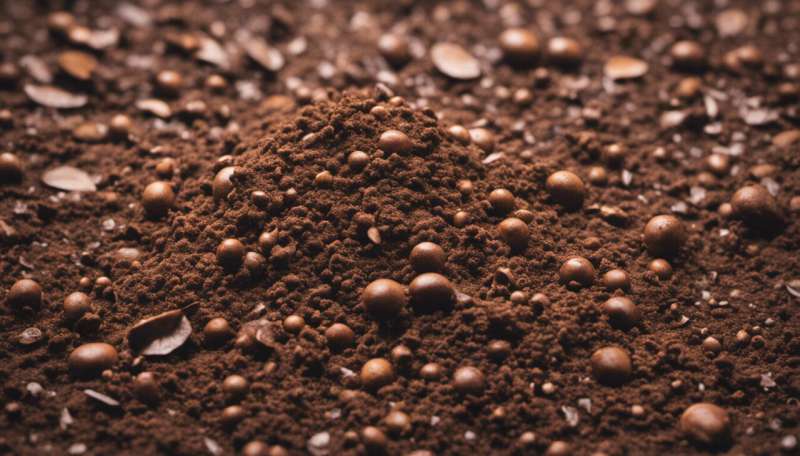Changing the soil the key to reducing childhood lead exposure

The link between Port Pirie's lead smelter emissions and childhood health issues is well documented, but a new study reveals a possible solution for reducing childhood lead exposure—amending the soil.
A University of South Australia experiment shows that treating lead-contaminated soil with water-soluble phosphates can reduce lead exposure significantly via both hand-to-mouth soil ingestion and dust inhalation.
"Amending soil may be the most cost-effective strategy compared to removing, replacing, capping or washing the soil," according to UniSA environmental scientist Dr. Farzana Kastury.
Dr. Kastury and her colleague, Associate Professor Albert Juhasz from the Future Industries Institute, led a large international study to "immobilize" lead in the soil by changing its bioavailability so that it can't be easily absorbed in the body.
Lead is ingested mainly through children playing in soil, but the UniSA researchers also looked at how lead is absorbed into the lungs and gastrointestinal tract by inhaling household dust contaminated with lead.
Dr. Kastury recorded lead absorption using indoor dust from an old, uninhabited house in Port Pirie, where lead concentrations were 30 times higher compared to the soil outdoors.
The Port Pirie house used in the experiment was an older home with lead-based paint contributing to about 65 percent of the household dust. While lead-based paint was banned in Australia in 1969, any house older than 50 years may still contain lead-based paint, which can be properly sealed to reduce exposure, Dr. Kastury says.
"Using a mouse model, we found that when the Port Pirie house dust was inhaled, blood lead levels spiked immediately and did not return to baseline within 24 hours," Dr. Kastury says.
Our research found that lead quickly gets absorbed in the lung within the first eight hours, followed by further absorption from the small intestines, when particles are cleared from the lung and swallowed."
A similar study undertaken by Dr. Kastury using Broken Hill dust also revealed very high spikes in blood lead levels through inhalation. In that case, lead came from mining/smelting, not from lead-based paint.
In this study, amending the soil reduced lead absorption via inhalation by 56 percent within 24 hours. This is important because scientists have always focused on hand-to-mouth ingestion of lead in children, for example while playing in soil, with little focus on the inhalation pathway.
"By changing the bioavailability of lead in the soil using amendments, we can hopefully make it more difficult for the body to absorb lead and reduce the potential for long term adverse health consequences," Dr. Kastury says.
Lead poisoning affects cognitive development in young children by damaging the nervous system and can also cause anemia, weakness, kidney and brain damage.
The studies undertaken by Dr. Kastury's team have been published in Environmental Science and Technology.
More information: Farzana Kastury et al. Dynamics of Lead Bioavailability and Speciation in Indoor Dust and X-ray Spectroscopic Investigation of the Link between Ingestion and Inhalation Pathways, Environmental Science & Technology (2019). DOI: 10.1021/acs.est.9b03249
Journal information: Environmental Science and Technology , Environmental Science & Technology
Provided by University of South Australia



















